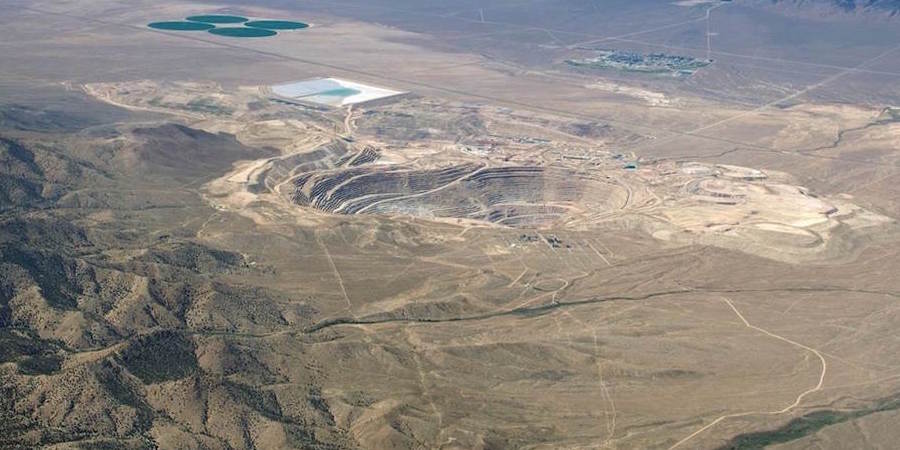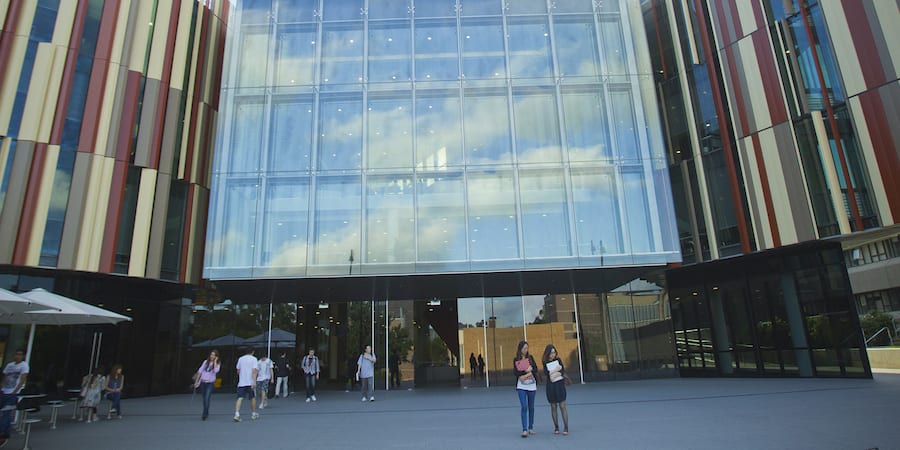
Lean is creating a 900-strong CI team in a gold mine
CASE STUDY – The extraordinary transformation of Kinross' Round Mountain gold mine in Nevada over the past six years shows that lean thinking can – quite literally – move mountains.
Words: Deanna Hall, continuous improvement facilitator; Vicente Ramirez, continuous improvement facilitator; and Frank Wagener, continuous improvement manager
Saying that Round Mountain is remote is a bit of an understatement. Our mining community is located in the heart of Nevada, a four-hour drive north of Las Vegas, at the foot of Shoshone Mountain.
Gold mining is a huge industry in Nevada. It has been since the 1800s, as shown by the hundreds of mines and mining communities (some of them are ghost towns) dotting the state. The Round Mountain area has seen gold production for 110 years; our open pit heap-leach gold mine, owned and operated by Kinross Gold Corporation, has produced 14 million ounces of gold since 1977.
Our location and our line of work are testament to the fact that lean really has spread to every corner of the world – no matter how remote – and to every sector of the economy. At Round Mountain, where around 900 people are employed, we've been working with continuous improvement since 2009.
When we started, things were going well. We had no burning platform forcing us to question ourselves and the way we did things. We were lucky that global and local leadership had the foresight to begin improving back then, when things were good, in order to make it easier to weather the storm once the tide changed – which happened in 2012, when the price of gold started dropping (it has every year since). Thanks to lean, this hasn't come as a shock.
Because the first push came from the top, it would have been easy to fall into the trap of forcing a new way of working onto our people. But we didn't want to be the "CI cops" – instead, we looked for people who wanted to be part of the initiative and tried to show them the value that lean could bring to Round Mountain.
At first, we were going around "drumming up business," so to speak, whereas now people are coming to us all the time, asking to take part in training, and we are often overloaded. Now, that to us is success.

A 900-STRONG CI TEAM
Developing people from the ground up has been at the core of our strategy since the beginning, which was critical to preparing the organization for the downward turn in the market we are currently experiencing. We are teaching our people to think lean and giving them all the tools and information they need to be successful.
Two fundamental elements of our approach to developing people are the use of a continuous improvement board – to encourage them to take a more active role in the improvement of processes – and the creation of cross-functional teams.

The areas for the cross-functional teams were selected based on the impact they could have on the business and on where people seemed to be most receptive. Senior management kicked us off and pointed us in the right direction, but for the most part we allowed the team members to figure out improvements by themselves.
The two main cross-functional teams we established were:
- Pit Way Forward (PWF), a team focused on improving mining efficiencies and reducing costs;
- A PWF team is made up of multiple departments working on different high-impact issues to drive improvement in our cost per ton mined, which contributes directly to our bottom line.
- The cross functional nature of the teams contributes to removing silos and promoting a holistic goal rather than individual departmental success.
- An environment of open communication is established leading to trust and accountability amongst the team.
- KPI boards are utilized to keep our workforce aware of their contribution to the success of the various efforts.
- Leach Way Forward (LWF), a team focused on increasing the leaching area and the efficient use of solution to increase gold recovery.
- Another highly successful effort at our site that was the result of multiple departments working together towards a common goal.
- The trust and communication that resulted from the LWF team was satisfying and rewarding for all involved.
The continuous improvement board was our response to the need to capture improvement ideas coming from the employees. We previously used suggestion boxes for safety, but we really didn't have a process for submitting improvement ideas. We saw how Cashman (our Caterpillar dealer) was collecting ideas from their workforce and we implemented their system (Caterpillar CI Boards). Making things visual helped to create a continuous flow of ideas coming from people at all levels of the organization – we had 500 improvement ideas submitted in 2015.
Here's an image of our improvement board:

We have learned that improving without making sure that everybody knows our ultimate goal is not the right approach. We use line-of-sight – known to most lean practitioners as True North – to ensure people understand our site has a goal and that each department and individual has a contribution to make towards it.
We are indeed all working towards the same True North, but we are just a small CI team who can only have a limited impact. Our aim is to ultimately have a 900-strong continuous improvement team. To get there, we need everyone at Round Mountain to buy in. Once that’s the case, we will be able to stand on the sideline and support people in driving change themselves.
It has been great to see our folks getting out of lean training invigorated and bursting with enthusiasm. This is often not the case when it comes to classroom learning! When they go back to work, our people are really trying to make a difference. After a recent training session, for example, one of them, Amber, did a line-of-sight exercise with the people in her department; another one introduced standardized work in his area. It is very satisfying to see people sharing what they learn and becoming more aware of how their work impacts others in the organization. It seems that lean is naturally spreading across Round Mountain, and that people are using it without us having to ask them to.
But don’t take our word for it. Here’s a couple of videos of Kinross people sharing what lean means for them.
Lean is all about iteration, and this is true for everything that we do. For example, we have recently seen a shift in our ability to overcome a lot of the issues we had with recognition. We often heard the complaint that the CI team got all the credit for the changes people brought forward, even though we were trying really hard not to. What allowed us to move past the hurdle was a very simple and small change: all we had to do was change the title of a slide in our training material. Sometimes the smallest adjustment has the biggest impact you can imagine. We changed the wording from “continuous improvement savings” to “improvements for Round Mountain as a whole” and we saw a complete change in attitude.
Sharing with our people the fact that we want all 900 of them to become active improvers was one of the best things we could possibly do. At a recent monthly CI meeting, our VP used the same expression, which of course added resonance to our voice.
THE PROCESS, AND HOW WE IMPROVED IT

We realize not all of you will be familiar with the mining process, so here is how it works in a nutshell.
In general terms, our geologists and geophysicists identify where the ore deposit is, we go there and do the drilling and blasting of the material. We then load it onto haulage trucks, and send the waste to the dump and the ore over to our processing department.
We essentially make bigger rocks into smaller rocks. Depending on the type of ore, the process changes: some of it goes to the mill; the rest is sent to the leaching area and from there to refining. The end product is the gold bar.
When it comes to improving the work, one of our biggest efforts was on shortening the time between finding the ore and delivering it to the processing department. In figuring the quantity of material we could carry on a truck, we used to go by eye, which often meant that our people tended to under-load them – they had always worked that way and nobody ever told them anything different. To eliminate this problem and ensure we made full use of the trucks, we worked hard to understand the loads they can bear for all the materials we transport, and developed a standard for each of them (we found that illustrations are useful to help people remember the standards, and the results are featured on our KPI boards). This was a great way to reduce our operating costs, as we achieved a lot more haulage with the same number of trucks and burning the same amount of fuel.
Another great example of improvement was the shift change. A mining site is nothing like a factory: because you need to take people out to the field, inspect the trucks and then get them on the road, our shift changes tended to be all over the board. We started to measure them accurately and, again, developed standards that helped us to shorten the travel and delay time between shifts.

Our approach to standards is simple, and based on the idea of testing theories rather than jumping straight to solutions. If something works, it becomes a standard. If it doesn’t, it is a new learning that we will use to eventually get to the standard.
As we try different things, we often encounter obstacles. Not all experiments work as planned – like that time we encountered a number of unforeseen complications and a whole bunch of workers got stuck at the pit after their shift and we ended up having to pay a lot of overtime. In some things, however, we are at the cutting edge. For instance, in maintenance (a critical activity for us, given the fundamental role that heavy machinery plays in a gold mine): based on the amount of ore we had to move, we calculated the availability we needed from each piece of equipment. We started to track things like mean time to first failure, and increased our focus on preventive maintenance by setting up an “assembly line” for two trucks to be serviced at one time. It works like a car wash, with different people responsible for different tasks. Together, they service two trucks in four hours (most mines take eight hours to do the same).
It’s been truly incredible to watch our people change over time, as lean took roots at Round Mountain. We openly talk about everyone’s role in our lean journey now, and we have started to see increased engagement with the KPI boards, as people show more interest in understanding how their work contributes to the achievement of Kinross’ goals.
At the beginning of the transformation, there was a lot more direct involvement of the management team, who guided people, directed them, and coached them, whereas now we are trying to get the front-line to become more proactive in understanding where we need to go and how we need to get there. This greatly encourages them to take responsibility for the transformation of Round Mountain. Ultimately, leadership is there to remove the obstacles standing between our people and the achievement of their goals.
This is not to say that management is absent. In fact, we are very much out there, regularly carrying our what in a normal environment would be called gemba walks. We have a different name for them – Management Team Inspections – but the concept is the same: managers walking around the site, inspecting all 24 areas and visiting all six teams. It’s a way for us to be visible and, coupled with coaching, it has proved very powerful.
THE FUTURE OF ROUND MOUNTAIN
The dropping price of gold is not our only challenge.
We have about three years of mine life left. However, we have already identified another body of ore nearby that would give us another 10 years. Lean thinking is critical to help us get there, as it makes us flexible, allows us to be more productive and cost effective and keeps our people motivated to always look for ways to raise the bar.
What you normally see in a mine that is approaching its “end of life” is that things start to inexorably slow down. Why would you keep working at the same pace if you know your job will be gone once you are done? Luckily, we don’t have this problem at Round Mountain, as our people know that if we keep working together our future will be bright. And we know that without 900 problem solvers and improvers getting there will not be possible.
FACILITATING THE LEAN JOURNEY AT ROUND MOUNTAIN
by Ernie and Tracey Richardson, Teaching Lean Inc.

Kinross are our first client in mining, and at the beginning getting some of the lean concepts across was a bit of a struggle. Due to the nature of the work, words like “go see” and “gemba” seemed to lose some of their meaning.
We have been using our Land Cruiser assembly simulation as a conduit, a tangible, visual gemba to help the team understand lean and how it can support the mining process. Every time we visit Round Mountain, we run two parallel training sessions side by side, and it’s been great to see a good level of friendly competition develop among the members of the two groups.
Interestingly, our training has evolved together with Kinross people, and we are now focusing on passing them the torch: our goal is not to come here all the time, but to give them the knowledge to drive the transformation themselves. After all, the value of what you do as a coach is measured by what happens after you are gone.
For us as trainers, at Kinross and anywhere else, the most fundamental principle is always leading and learning simultaneously – the real meaning of ‘servant leadership’. As Fujio Cho, former President Toyota Motor Corporation, said: leaders just have to study a bit harder to stay one step ahead.
What’s unique about Round Mountain is not just the processes or the location, but the message that has come out strong from leadership since the very beginning: that to succeed, Round Mountain needs 900 people to be on the journey. This vision is being turned into reality every day, as more and more people buy into lean thinking and “keep the mountain moving” one scoop at a time.
The organization is gradually going from push to pull (people want to take part in training) and it’s clear that there is a dramatic cultural shift that is taking place at Round Mountain. People are driving it, sometimes without even realizing it – and that’s what you want to see.

THE AUTHORS



Read more


FEATURE - Mission creep, silos and a disengaged workforce are some of the negative effects of traditional management. Michael Ballé offers an alternative based on the respect for people principle of lean thinking.


CASE STUDY – An Australian university has been applying lean to streamline and improve its processes, discovering along the way how big a change the methodology can affect in the organization's culture.


FEATURE – We tend to describe lean as a holistic approach to a transformation, but we won’t be able to truly embrace it until everyone starts to see the organization as a system.


WOMACK’S YOKOTEN – The rise of the robots may still belong in sci-fi books, but there is no doubt that work as we know it is fading away. What is the role of lean thinking in this world of drones and driverless taxis?

